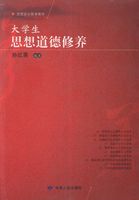●353◆ Jan Luiten van Zanden, ‘Before the great divergence: the modernity of China at the onset of the industrial revolution’, VOX 26 Jan. 2011, http://www.voxeu.org/index.php?q=node/6051.
●354◆ Kenneth Pomeranz,The Great Divergence: China, Europe and the Making of the Modern World Economy, Princeton: Princeton University Press, 2001.
●355◆ 见Philip Huang, The Peasant Family and Rural Development in the Yangzi Delta, 1350-1988, Stanford: Stanford University Press, 1990, pp.11-18 and ch.5。
●356◆ 参看Robert Brenner and Chris Isett, “England’s divergence from China’s Yangzi Delta: property relations, micro-economics and patterns of development”, The Journal of Asian Studies 61:2, May 2002。
●357◆ 见Jean-Laurent Rosenthal and Bin Wong, “Another look at credit markets and investment in China and Europe before the industrial revolution”, Yale University Economic History Workshop, 21 Sept 2005, pp.14-18。比较Takeshi Hamashita, “The tribute trade system and modern Asia”, in Heita kawakatsu and John Latham, eds. Japanese Industrialization and the Asian Economy, London: Routledge, 1994 和Thomas Ertman, Birth of the Leviathan: Building States and Regimes in Medieval and Early Modern Europe, Cambridge: Cambridge University Press, 1997。
●358◆ 引自Fernand Braudel, The Perspective of the World: Civilization and Capitalism, 15th-18th century, vol.III (1979), London: Fontana Press, 1984, pp.217, 490-1, 520和 Andre Gunder Frank, ReOrient: Global Economy in the Asian Age, Berkeley: University of California Press, 1998, pp.134-9。参看韩毓海在《五百年中谁著史:1500年以来的中国和世界》(九州出版社,2009)中对明清中国财经政策结构性弱点和危害的讨论,pp.152, 161, 295。相反的看法则认为美洲白银及其货币化总体上既增加了“中国本币基础的数量、稳定和统一”,又促进了她农业商品化和手工业生产的发展。见Evelyn Rawski and Thomas Rawski, “Economic change around the Indian Ocean in the very long run”, the Harvard- Hitotsubashi-Warwick Conference, Venice, 22-24 July 2008。
●359◆ Arrighi, Adam in Beijing, p.230-2,226-72.
●360◆ 见Bin Wong, China Transformed: Historical Change and the Limits of European Experience, Ithaca: Cornell University Press, 1997: 例如, 如果在1800年前后错过了工业革命是中国的失败,那么在1100年前后错过建设一个精密文官管理制度之下“稳定统一的秩序”就是欧洲的失败 (pp.7, 72ff, 290)。又如一些对中日朝越等在欧洲资本主义之前的“现代性”的研究,发现那里的哲学家和改革者早就讨论了后来西方传统中许多有关理性经济和法治政府的思想,诸如选贤用能,公共福利和“人的发展”。参看Alexander Woodside, Lost Modernities: China, Vietnam, Korea, and the Hazards of World History, Harvard University Press, 2006。印度是另一常用的实例,如“底层研究”学派的许多讨论。亦见Amartya Sen, The Argumentative Indian: Writings on Indian History, Culture and Identity, Picador, 2006讨论印度穆斯林王朝时代的自由民主。
●361◆ 引自Braudal, The Perspective of the World, pp.484ff; Arrighi, Smith in Beijing, p.321。
●362◆ 根据这些数字,“按平均水平在1750年前后亚洲人肯定比欧洲人有着高得多的生产率”,Andre Gunder Frank, ReOrient, pp.172-3。
●363◆ 引自Kenneth Pomeranz, “Chinese development in long-run perspective”, Proceedings of the American Philosophical Society 152:1, March 2008, p.96。
●364◆ 中国的富有与“古代埃及”和“印度斯坦”并列。引自Adam Smith, An Inquiry into the Nature and Causes of the Wealth of Nations (1776), edited by Edwin Cannan, Chicago: University of Chicago Press, 1976, pp.30, 70-71, 210。
●365◆ 这个概念较早由Hayami Akira提出,实例是江户时代的日本,后来借用于其它场合(如Jan de Vries, The Industrious Revolution: Consumer Behavior and the Household Economy, 1650 to the Present, Cambridge: Cambridge University Press, 2008, pp.78-81)。参看Arrighi, Smith in Beijing, pp.32-9, 93。
●366◆ 参看Kaoru Sugihara, “Agricultural and industrialization: the Japanese experience”, in Peter Mathias and John Davis, eds. Agriculture and Economic Growth, Oxford: Blackwell, 1996; 和“The East Asian path of economic development: a long-term perspective”, in Giovanni Arrighi, Takeshi Hamashita and Mark Selden, eds. The Resurgence of East Asia: 500, 150 and 50 Year Perspective, London: Routledge, 2003。
●367◆ Pomeranz, “Chinese development in long-run perspective”, pp.91-5.
●368◆ 见Mark Elvin的评论, “The historian as haruspex”, New Left Review 52, July/Aug 2008, p.87。
●369◆ 同上,p.99。
●370◆ 引自Jack Goody, The Theft of History, Cambridge: Cambridge University Press, 2006。
●371◆ 见ReOrient, pp.30ff。参看Robin Blackburn, The Making of New World Slavery: From the Baroque to the Modern, 1492-1800, London: Verso 1998。














